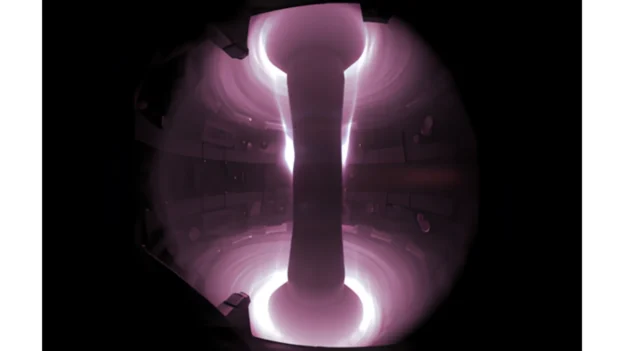In a breakthrough of major significance for the future of fusion power, researchers at the United Kingdom Atomic Energy Authority (UKAEA) succeeded in stabilizing the plasma in the MAST Upgrade spherical tokamak using a three-dimensional magnetic field applied by magnetic coils. This is the first time this technology has been employed in a spherical tokamak configuration, marking a decisive step towards the viability of fusion as a clean and sustainable energy source.
3D magnetic coils – the new standard in confinement?
Plasma is like an incredibly energetic and turbulent fluid and sometimes, it develops instabilities on the surface of the plasma that launch bursts of energy and particles, called ELMs (Edge Localized Modes). In a large-scale commercial reactor, these instabilities would be so powerful that they would damage and erode the internal walls of the reactor, shortening its lifetime.
In the experiment conducted, the scientists managed to completely suppress the ELMs using special magnetic coils, called Resonant Magnetic Perturbation (RMP) coils, which allow a 3D magnetic field to be applied at the edge of the plasma.
This type of control has been used in conventional tokamaks, but never before successfully in a spherical one, which opens up new possibilities for the design of advanced control systems in future fusion power plants, such as the STEP (Spherical Tokamak for Energy Production) project.
What else was achieved?
Independent control of plasma exhaust
In spherical tokamaks, such as MAST Upgrade, there are 2 diverters that are responsible for controlled removal of heat and spent particles from the plasma. For the first time, researchers were able to independently control the exhaust flow in the upper and lower diverters without affecting plasma performance.
This means that if one baffle overheats or wears out, more load can be redirected to the other, improving thermal management. This is like being able to individually regulate the exhaust of two cylinders of an engine without affecting its overall performance.
Improved plasma shape and performance
The researchers succeeded in creating the best plasma shape to date in MAST Upgrade, with a “lengthening” of 2.5. This means that the plasma is tall and thin (like an apple), rather than fatter and rounder. A more elongated shape is more stable and allows more plasma pressure to be confined in a smaller space, thereby producing more fusion energy.
UKAEA leads the way to the STEP reactor
All these advances are part of the experimental framework that provides scientific support for the development of STEP, the UK prototype fusion power plant planned for construction in the 2040s. The project is funded by the UK government and linked to the European EUROfusion consortium, demonstrating the strategic and collaborative nature of this research.
The upcoming MAST Upgrade pilot campaign is expected to extend and validate these achievements, further cementing STEP’s technical design and cementing fusion energy as a real alternative to fossil fuels.
Source: UK Government

